Wildlife Safety Tips
Something that has prevented people from experiencing the outdoors is wildlife encounters. I used to be hesitant when I first started hiking. But after reading up on wildlife safety and encountering many wildlife while hiking, I have gotten waaayyy more confidant. I realized it just takes practice and research to get over your fears.
Below I go over what to do if you ever encounter wildlife while hiking or backpacking. Please note that no animal has ever attacked me, so I did not write this post out of experience but out of research. I do hike every weekend, usually in bear country, and I have come across many bears with their cute cubs, and I haven’t been attacked so, don’t let your fears get to you! Do some research by reading below, buy some bear spray, and get outside!
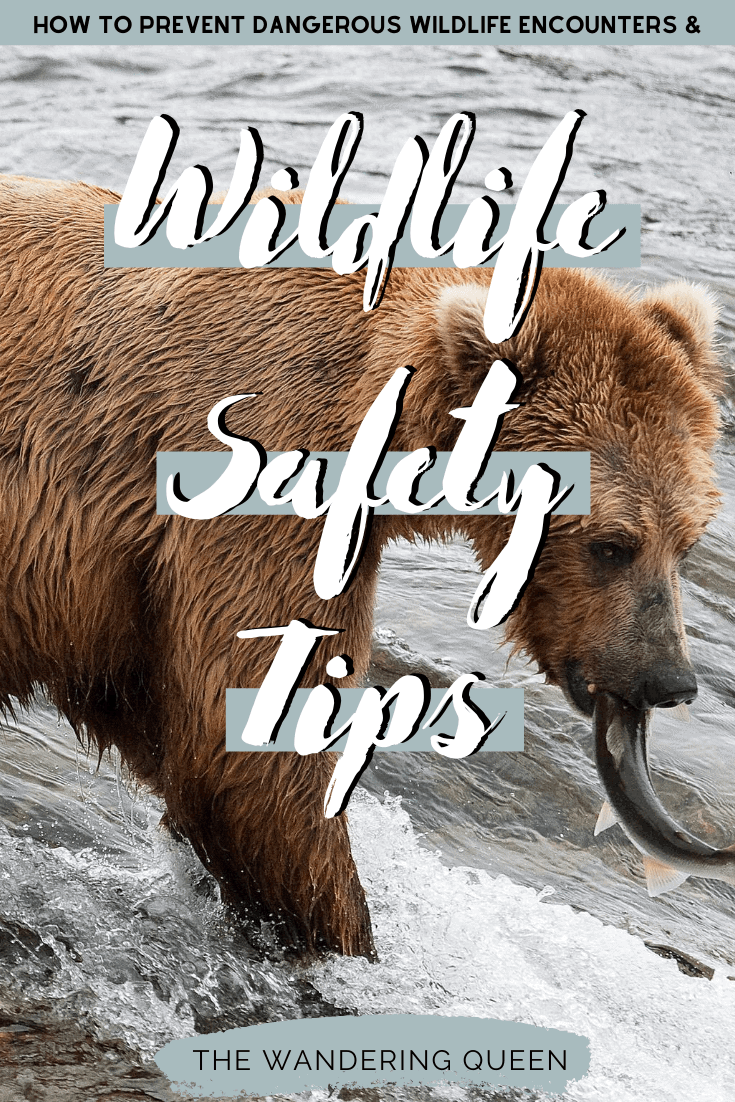
Disclosure: This post contains affiliate links. If you click one of them, I may receive a small commission (for which I am very grateful for) at no extra cost to you.
Download my free Outdoor Photography Guide
Wildlife Safety Tips
- Stay far away from wildlife: I have seen so many people get near wildlife just to take pictures. Elk, moose, and bison are good examples of animals that may seem non-threatening, so people usually swarm them to take pictures. These animals are a lot larger and stronger then you and if they feel like you are getting too close they will charge at you!
- Store food correctly: When you are camping in bear country store food in the bear storage locker (usually located at campsite) or if you are backpacking store it in a bear canister or bear bag on a tree. Scented items attract animals and could mean that animals start to associate people with food. This can be dangerous for future people visiting the campsite.>I store food here when I am backpacking in bear country.
- Leave no trace: Dispose of all trash properly (that includes foods that decompose like orange peels). Read up on leave no trace principles here.
- Make noise: When you are hiking or backpacking it is always a great idea to make noise so you don’t surprise and scare a bear. Some people wear bells to help make noise, I personally don’t.
- Research the place you are traveling: Wildlife safety in the Canadian Rockies is different then wildlife safety in the Washington Cascades (where I live). Even though Washington does have bears they are not the same type, so I make sure to educate myself on the Canadian bears when I travel there.
Types Of Wildlife You May Encounter
Bear
Different Types Of Bears
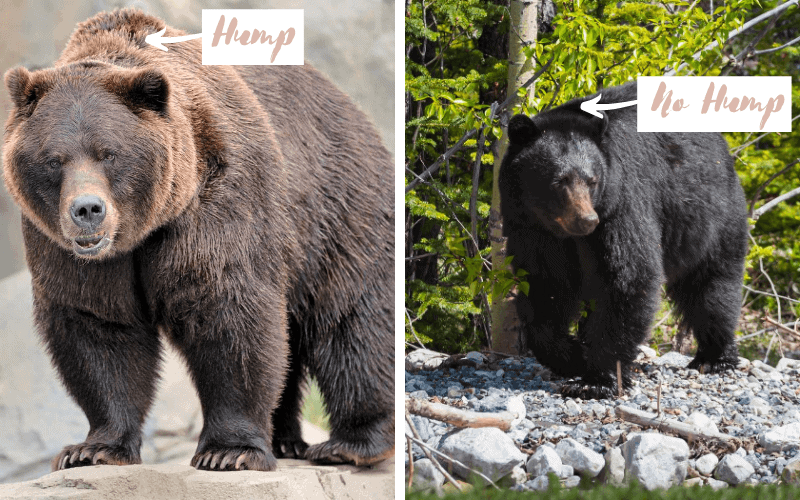
There are two types of bears you might encounter in the USA and Canada. Black bears or grizzly bears. Just because they are both bears, I would not treat them the same. You have to be able to distinguish the difference between both of them to know how to react when you see them.
The main difference between the bears is the hump. Grizzly bears have humps, while black bears do not. Please note that both bears can have different ranges in colored furs, so do not use colors to distinguish them.
Always carry bear spray if you are in bear country. Also, a bear vault should be carried if you are backpacking in bear country.
Where They Are Located
Grizzlies can be found in Wyoming, Montana, Idaho, Alaska, and western Canada, while black bears can be found all over the USA and Canada.
What To Do If you See A Black Bear
- Do not get close to the bear.
- If the bear has not spotted you, slowly try to walk away.
- If the bear spotted you and is getting close to you, get big with your arms, make a lot of noise, throw stuff at it.
- If a bear attacks you, attack back. Do not play dead. Throw rocks at it, sticks, or hit the bear in the face.
What To Do If You See A Grizzly Bear
- Do not get close to the bear.
- If the bear has not spotted you, slowly try to walk away.
- If the Grizzly charges, use the bear spray. It should be around 30 feet away from you.
- If that doesn’t work, then play dead. Lay on your stomach with your backpack still on. Protect your neck with your hands.
Cougar
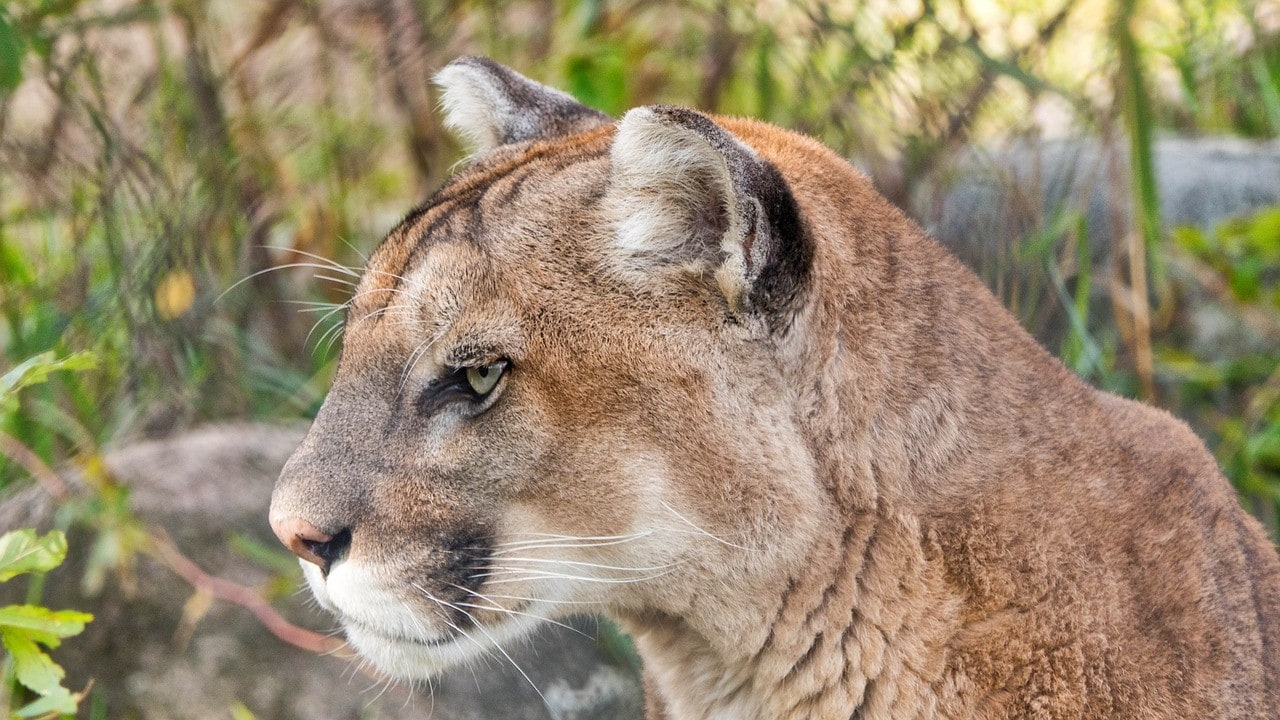
Cougars are rarely seen in the wild. They are elusive quiet creatures. If you do a lot of hiking in the western United States, they have probably seen you, but you probably didn’t see them. Cougar attacks are rare because they don’t like to interact with humans, but it is still good to read up on cougar attacks.
Where They Are Located
Cougars are usually in western United States and Canada and sometimes in the eastern USA.
What To Do If you See A Cougar
- Do not get close to the cougar.
- Do not run. It might trigger an attack.
- Keep your eyes locked to the cougar.
- Keep kids behind you.
- Make a lot of noise, make yourself large with your arms, throw things at it if it won’t stop stalking you.
- If the cougar attacks fight back. Use any weapon you have like a trekking pole, stick, and rocks. You can also use bear spray on it.
Bison
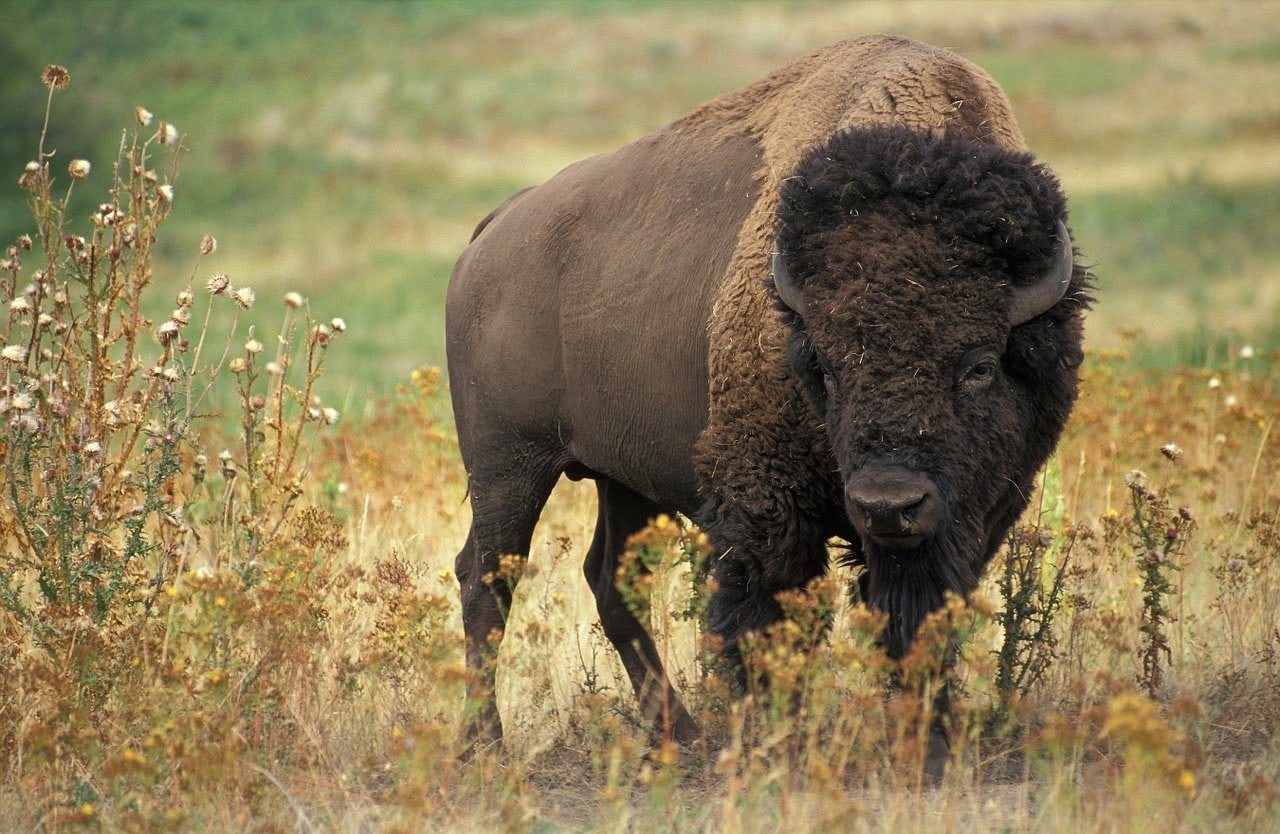
I know bears and cougars probably get a bad rep for attacks, but Bison is known to have the most human attacks in Yellowstone National Park. Yes, you heard that, right! Even though there are so many bears, and wolves in Yellowstone, it is this big furball animal that attacks the most humans.
Why? Because people get too close to them in these parks. People don’t see them as threats, get too close, and then boom an attack happens like this one. Bison can run up to 40 MPH and can weight up to 2,000 lbs!!!! So yeah, I am definitely careful when I see Bison.
Grab Your Free Car Camping Checklist! 🚗🌲
Ready to elevate your car camping game? Snag our essential checklist to ensure you’ve got everything you need for a stress-free, fun-filled adventure! Perfect for beginners and seasoned campers alike. Download now and hit the road prepared! 🌟🎒
Where They Are Located
They are located in the western USA states like Wyoming, Montana, North Dakota, and South Dakota.
What To Do If you See A Bison
- Don’t get close to the Bison.
- Do not chase them or try to scare them away; they might attack. Just wait for the Bison to move away.
- If you are in a car and they are nearby, just drive slowly.
- If they attack, hide behind a car, tree, rock, anything to keep you away from it. Always protect your head and neck.
Mountain Goat
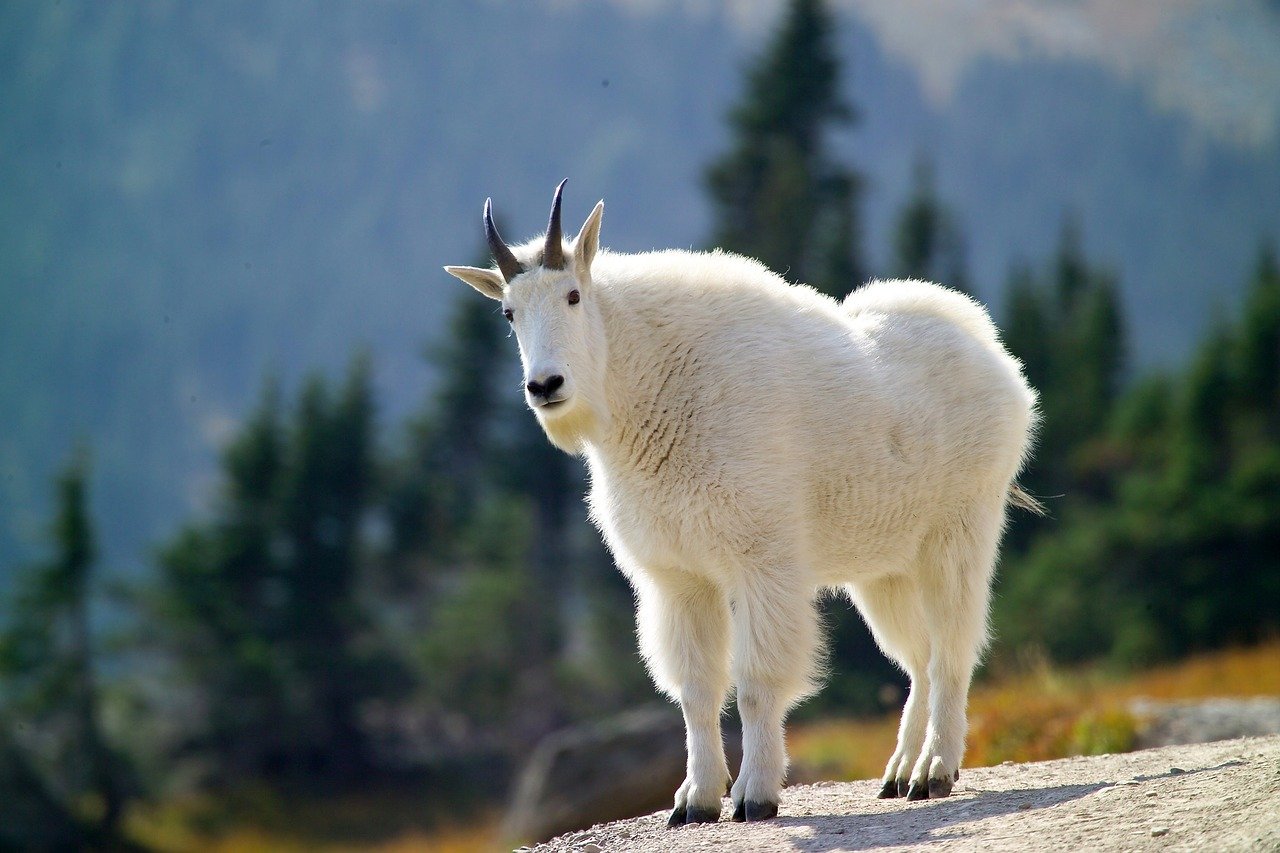
You would think Mountain Goats are pretty harmless, but they have a bad reputation here in Washington. Let me explain why. Goats love salt! So when people sweat or pee, and they realize that humans can provide them the salt they crave, they can get pretty aggressive. Of course, not all goats have associated humans with salt, so most goats probably won’t bother you.
I will say that I went on a backpacking trip recently, where I was told by numerous backpackers that there was a rampant goat destroying anything they left out while sleeping. So if you are in goat country, try not to leave your things and food out.
Where They Are Located
They are located in Alaska, Washington, Idaho, Montana, British Columbia, and Alberta, Canada.
What To Do If you See A Goat
- Stay far away from the goat.
- If the goat gets close to you, move slowly away.
- If it keeps on chasing, you try to make loud noises, throw rocks, and chase it away.
- If the goat attacks stay away from its horns and throw anything, you can. Hit it with rocks, sticks, trekking poles, etc.
Moose
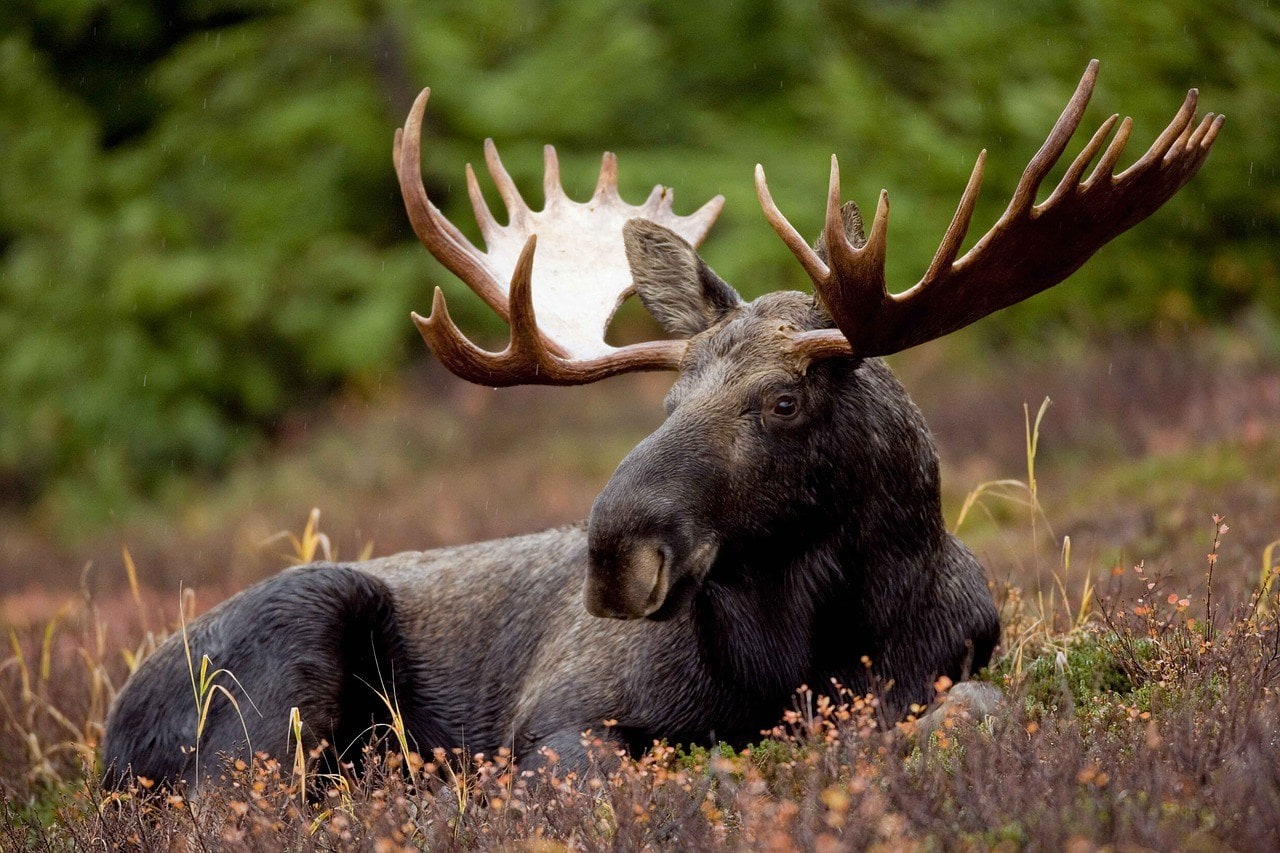
Moose usually are not threatening towards humans, but they will defend themselves if they need to. I have been near moose and let me just say that I would not to make this animal uncomfortable. It is huge!
Where They Are Located
They are located in Canada, Alaska, upstate New York, New England, the Rocky Mountains, Minnesota, Wisconsin, and Michigan.
What To Do If you See A Moose
- Stay far away from the moose.
- Hopefully, the moose didn’t see you, and you can quietly move away from it.
- If it does see you don’t freak out, move away slowly.
- If the moose attacks get behind a tree or boulder. If there is nothing, then just run as the moose might not chase you. It probably just wants you to get away from it.
- If he knocks you down protect your head and neck and get into a little ball. Don’t attack him back.
Elk
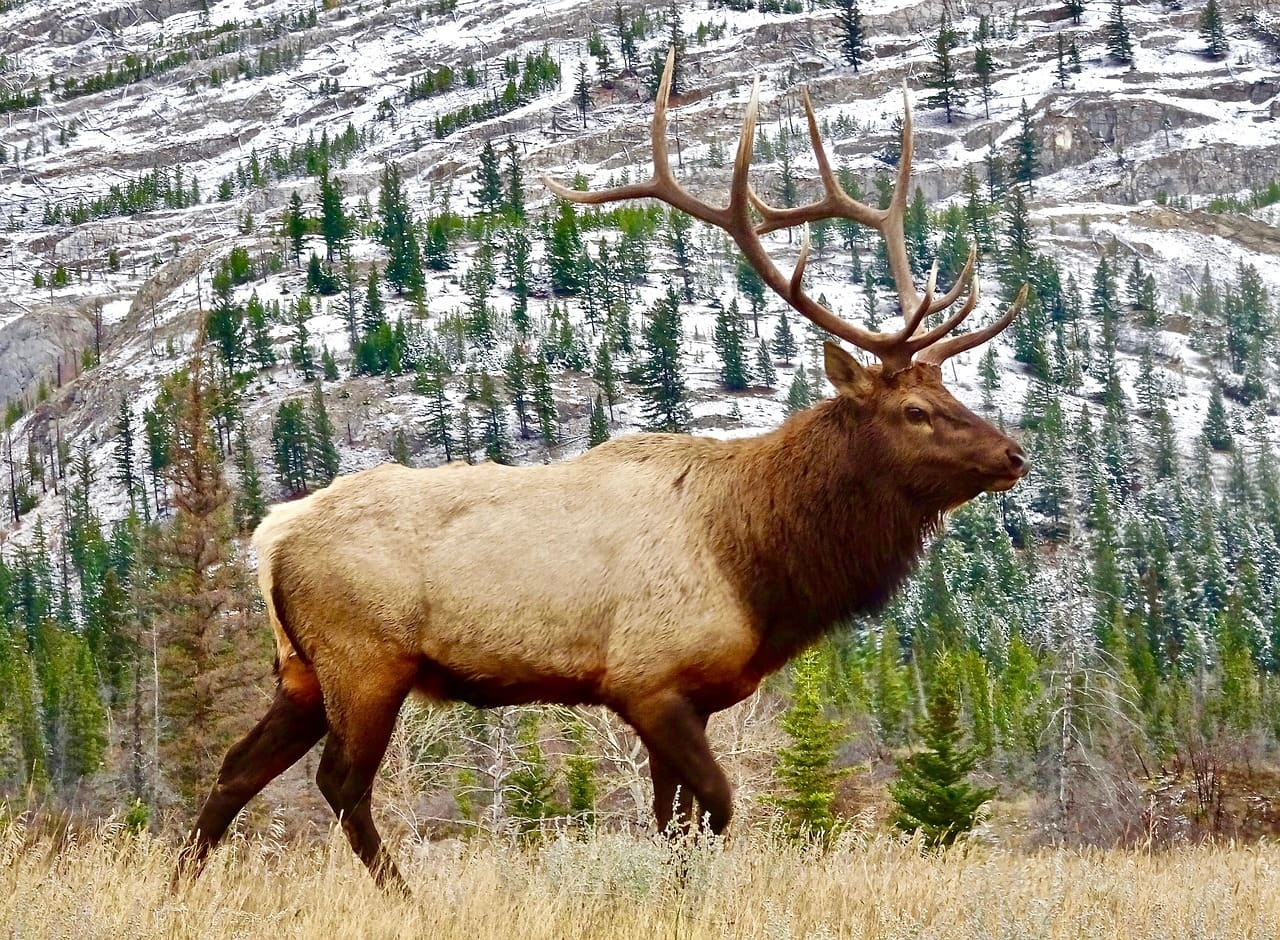
Elk is the wildlife I have seen the most on my adventures. They honestly scare me. They are massive!!!! The female, in particular, is known to attack people if they come anywhere near their calf, so every-time I have encountered this animal, I have been very cautious. When I went to Jasper, Canada, there were signs everywhere to stay away from the elk. The females roam everywhere with their young and attack anyone that gets nearby. So be extra careful.
Where They Are Located
Primarily in the western USA around mountainous areas.
What To Do If you See A Moose
- Stay far away from the Elk.
- If the Elk sees you, move away slowly.
- If it attacks, you find a boulder or tree to hide behind.
- Don’t turn your back to the elk and protect your head and neck.
Snake
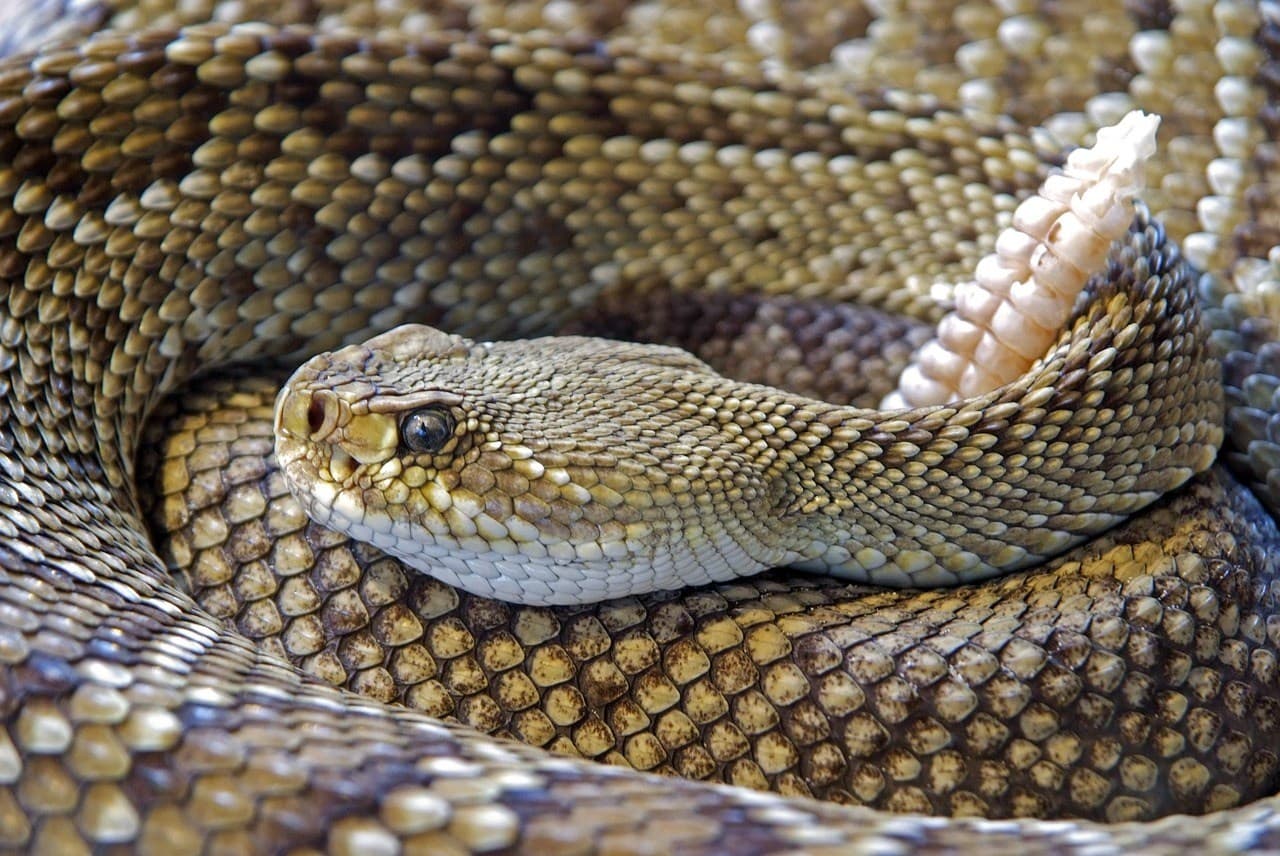
Most snakes attack you because you are in their space. Fortunately, not all snakes are venomous, and the ones you need to worry about are the rattlesnakes. Rattlesnakes make a rattling sound if you get near it, so try not to wear headphones if you are hiking in rattlesnake country.
Where They Are Located
They are located in California, The Rockies, The South and Southwest
What To Do If You See A Snake
- Stop walking and slowly move away from the snake.
- Snakes can strike up to half of its body length, so try to stay as far away as you can.
- Make a new path far away from the snake.
- If you get bitten, try to stay calm as the venom will work faster if you are freaking out.
- Clean with soap.
- Get to a hospital as soon as possible.
Conclusion
Thanks for reading all about wildlife safety tips! I hope this post helps you get outside more. Check out some other great outdoor resources below:
- How To Prevent And Treat Blisters
- The Best Camp Kitchen Gear For Your Next Outdoor Adventure
- How To Plan A USA National Park Road Trip
- 16 Best Hiking Apps You Need To Download

Claim your FREE Hiking Checklist
Ready to start hiking? Grab my free hiking checklist and never forget anything at home!
Pin For Later
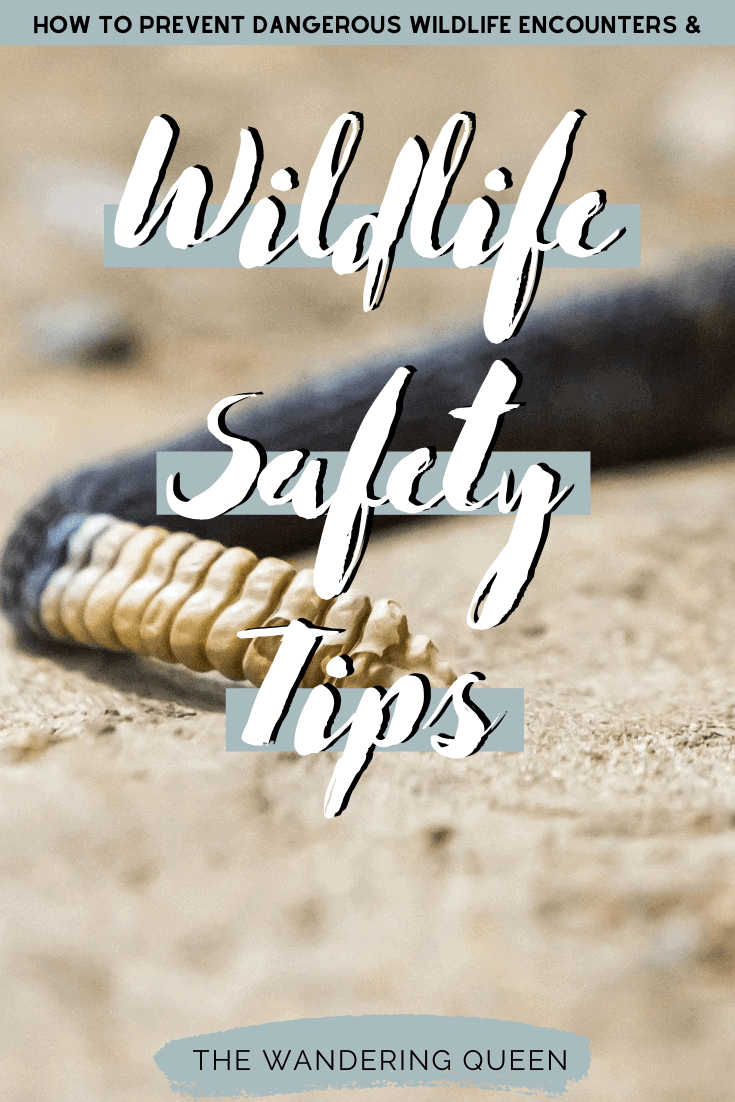
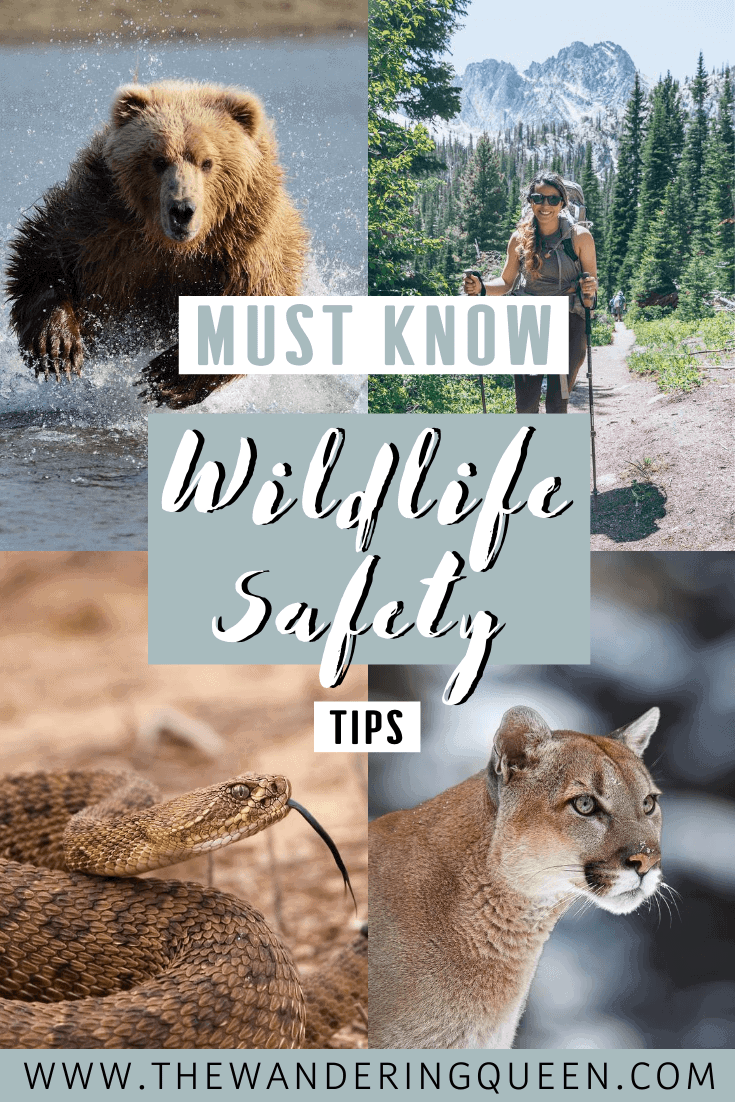


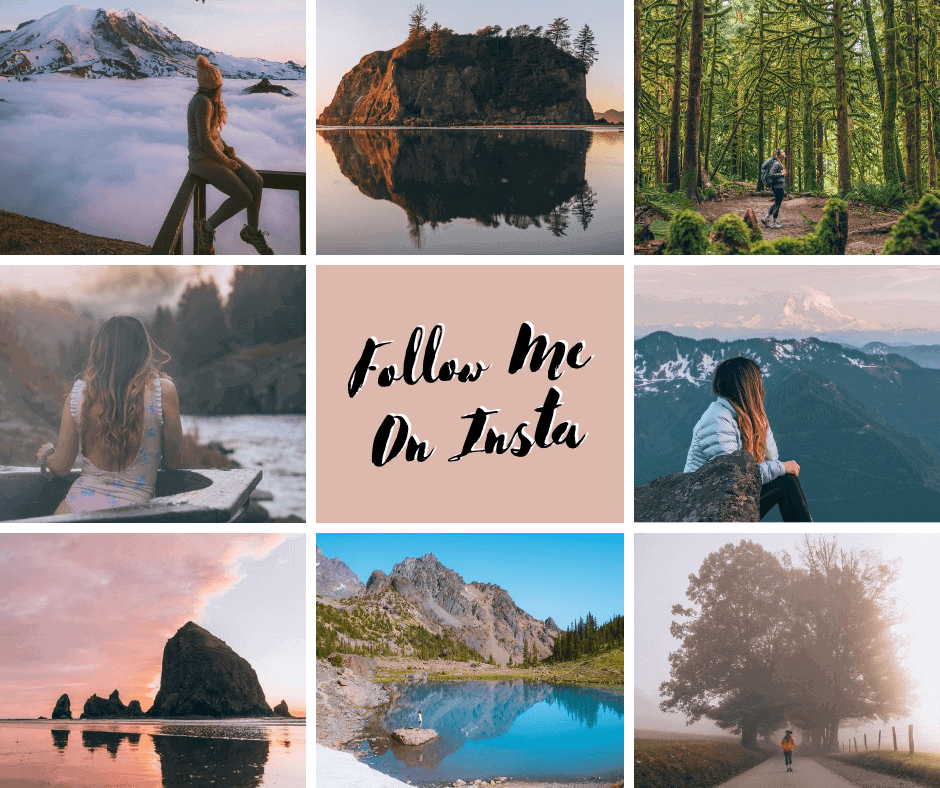

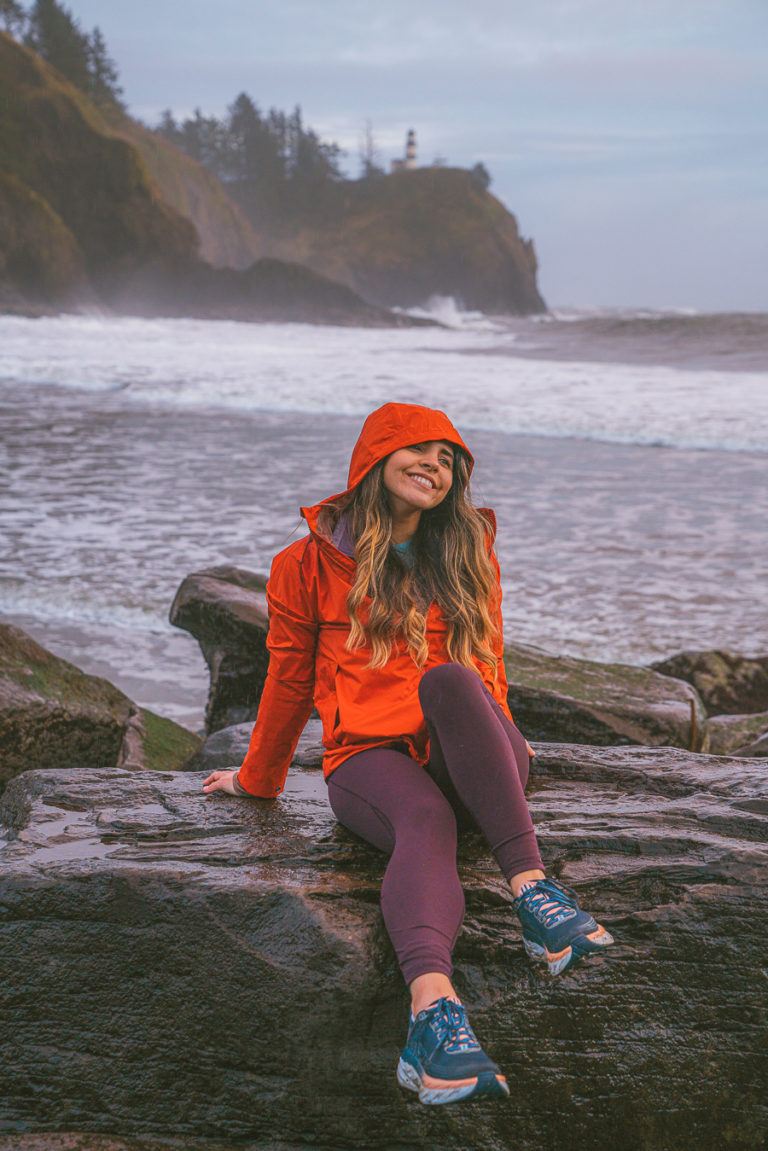
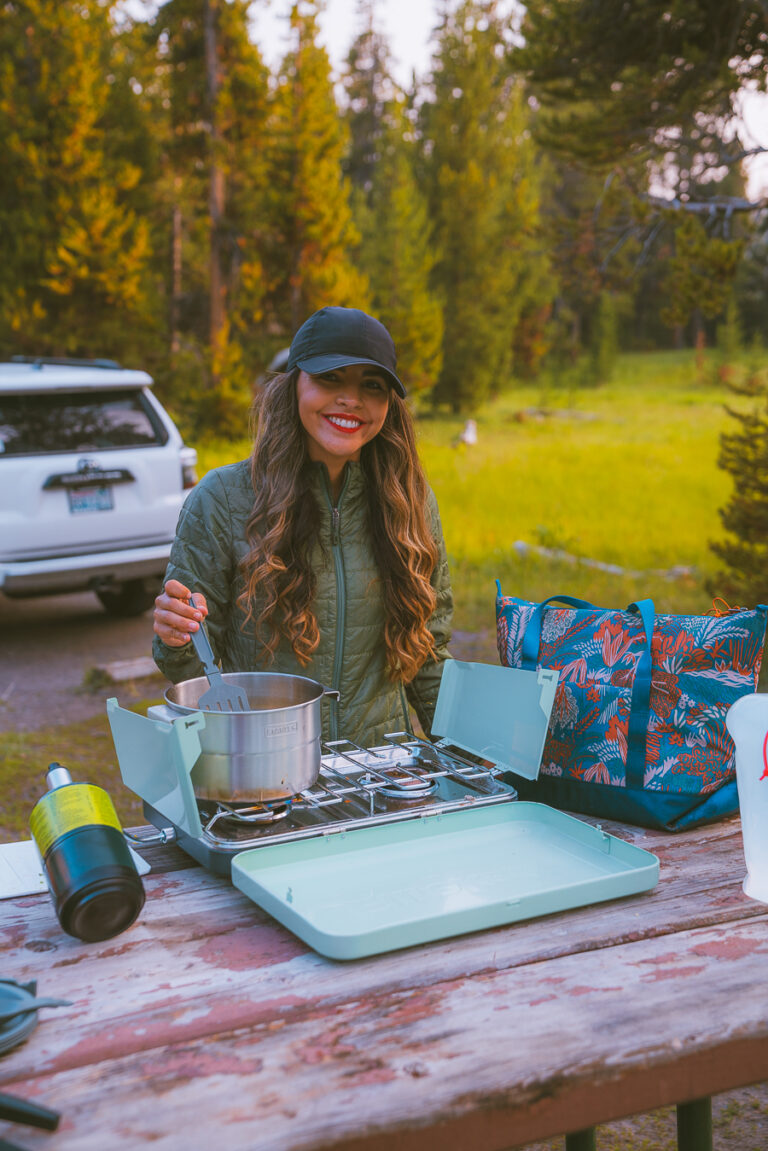
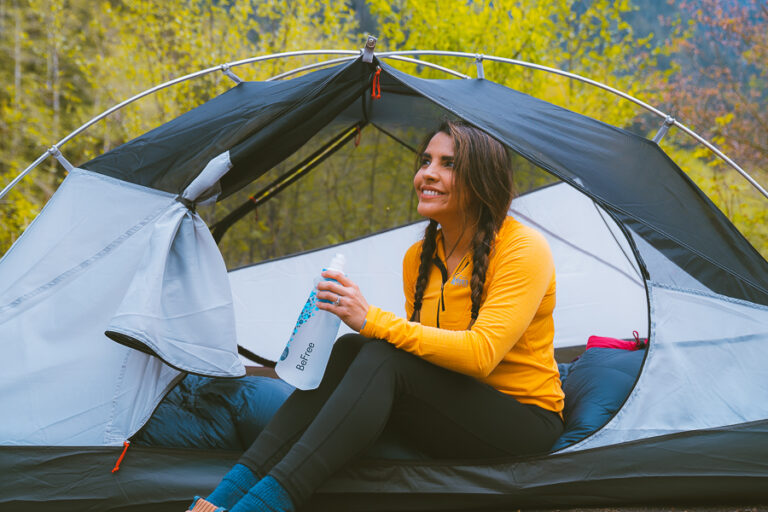
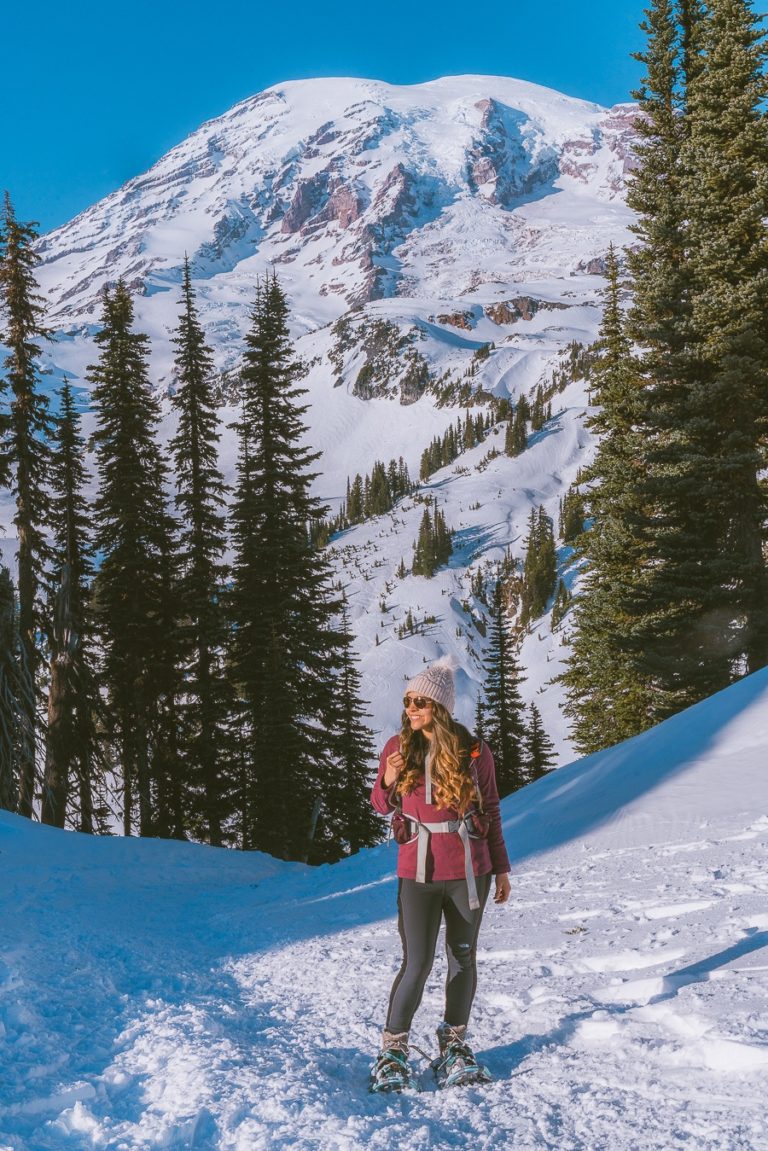
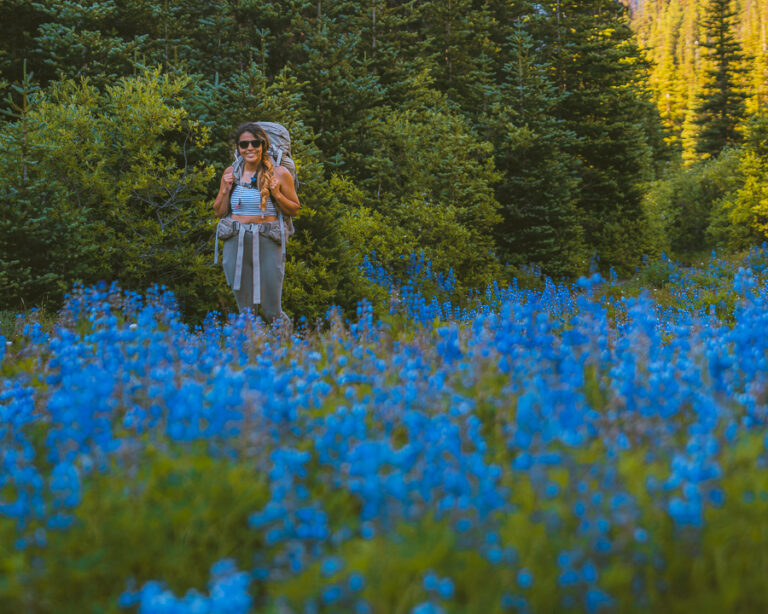
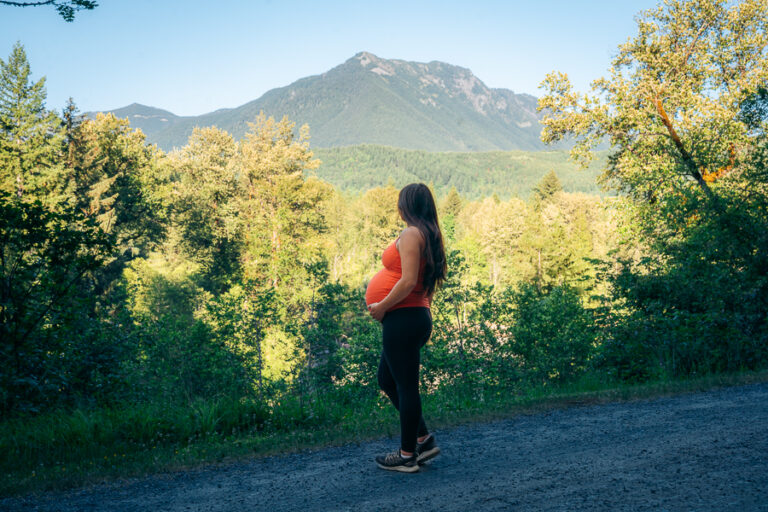
This is a super helpful guide! I have heard so much about what to do for bears and rattlesnakes, but not much about bison, moose, and mountain goats! It’s definitely good to know how to react differently for different types of animals. Thanks for sharing!
This is very helpful and easy to read! thank you so much!